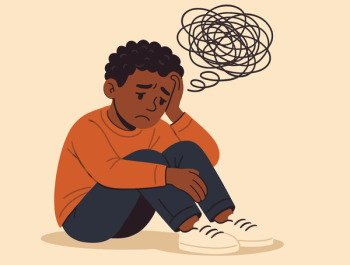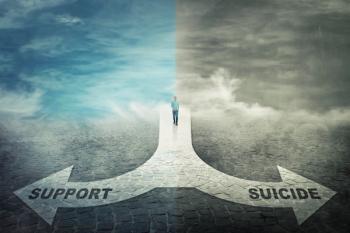
- Vol 40, Issue 11
Psychiatric Boarding in Emergency Departments
What does it mean to receive crisis care in the typical emergency department? Psychiatrists have a powerful role in reducing boarding.
“If you are having an emergency, please call 911 or go to your nearest emergency department.” This is a common statement heard after hours for those seeking care from their outpatient mental health providers. The statement may have been modified recently, directing patients to call 988, but the latter phrase continues to exist. But what does it mean to receive crisis care in the typical emergency department?
Unfortunately, care in the average
Issue of Boarding
Since deinstitutionalization—massive reduction in hospital beds with a plan for comprehensive community treatment and support—occurred, the focus has often shifted to the need for more beds rather than the need for more comprehensive services in the community.1 The bed issue is easier to define and quantify, and tends to be where the discussion stops.
When the belief is that individuals can only have their needs met in a hospital, the response is to send those patients in crisis to the ED. Historically, this has been the case. This belief is only slowly eroding with the advent of increased community resources such as mobile crisis services, urgent walk-in centers, crisis stabilization units, and respite services. When patients are only given the option of going to an ED, the ED ends up with many individuals who do not require their services.
EDs are ill-suited to treat behavioral crises and tend to think in terms of admission versus discharge—a binary decision. Because of this, more individuals are admitted than would need to be if the right services were in place. When more individuals are vying for a few beds, a backup takes place. This is commonly referred to as boarding. There are different definitions (based on amount of time) for this, but it is basically the time the patient continues to stay in the ED while waiting for a bed after the decision is made to admit. As noted previously, EDs are ill-suited to offer psychiatric treatment outside of protocols for urgent issues such as agitation or alcohol withdrawal.
An individual may board in the ED for hours, days, or even weeks. For some patients, they may be on a gurney in a hallway. For others, they may be in a small room without a television. They may be given breaks to walk around with a technician but probably not. Scheduled medications are usually not started. Sometimes, home medications are not even started. Nicotine replacement is only remembered if someone asks specifically to smoke. Is boarding the correct term? It seems too civilized a word for this treatment.
What Has Been Done
Members of the American Psychiatric Association (APA) Assembly brought this issue to the forefront, which led to an adopted position statement.2 The APA Council on Consultation-Liaison Psychiatry created a related resource document that outlined many of the issues and a framework for action.3 The APA and other organizations such as the American College of Emergency Physicians and the American Association for Emergency Psychiatry are members of the Coalition on Psychiatric Emergencies. This coalition organization has created bedside tools for emergency physicians to use when treating particular psychiatric emergencies, such as patients contemplating suicide (ICAR2E)4,5 and older patients with agitation (ADEPT).6 Additionally, they have conducted preconferences at multiple national conferences, hosted educational webinars, created position statements, and advocated on behavioral emergency topics.
National and state governments have prioritized funding for behavioral health emergencies. This has been evident by the proliferation of community urgent walk-in centers, mobile crisis services,
Psychiatry has a presence in some EDs and in various fashions. Some hospitals, especially teaching hospitals, engage consultation-liaison psychiatry for ED support. The role is consultation and largely focuses on risk assessments, treatment options, and admission decisions.
Over the past decade, emergency telepsychiatry has slowly expanded until a rapid growth of these services related to rule changes and billing with the COVID-19 pandemic. Separate psychiatric emergency services have existed for decades, but in 2012, a new model was proposed. This model showcased having patients in an open-bay room rather than in a small room with little contact with others. This new model, deemed the Alameda model, also took a regional approach, being the primary emergency facility for most behavioral emergencies in Alameda County in California.7 These concepts stayed constant as the services began to further evolve into facilities now named emergency psychiatry assessment, treatment, and healing (EmPATH) units. These EmPath units allow for a full array of psychiatric treatment—medications and therapy—with a focus on trauma-informed, whole-person care and have led to reduced hospital admissions.8
What Needs to Be Done
On the state and national level, there has been a lot of interest and support in the creation of new community-based services. The key will be to make sure these services are sustainable. In fact, on July 25, 2023, the US Department of Health and Human Services, US Department of the Treasury, and US Department of Labor released a proposed rule on mental health parity requirements for health plans with a request for information. This questions whether there are aspects of community-based behavioral health crisis services that should be addressed within the Mental Health Parity and Addiction Equity Act.
On a regional and local level, creating protocols between community crisis centers and inpatient psychiatric facilities to allow patients with normal vital signs to be admitted directly to an inpatient facility without a needless ED visit for the sole purpose of getting laboratory tests done is key. Psychiatrists have the lead role in creating these protocols. Experts note medical clearance is considered an outdated term without a specific meaning and should be replaced by the concept of medical stability.9 If a patient has signs or symptoms of an acute and urgent issue, then referring a patient to an ED is appropriate. Otherwise, diverting a patient to an ED to have a physical examination and laboratory tests completed is costly to the system and can be damaging to the patient.
What You Can Do
Psychiatrists have a powerful role in
A major complaint heard from patients experiencing a mental health crisis in the ED is the lack of control of self, situation, and setting. The experience of being in control comes from being able to make decisions for oneself based on information. We have a role in that. Maybe it is time to flip the script: “If you are having a mental health emergency, please refer to your crisis plan or call 988.”
Dr Nordstrom is an associate clinical professor in the Department of Psychiatry at the University of Colorado School of Medicine in Aurora.
References
1. New York Times Editorial Board. The solution to America’s mental health crisis already exists. New York Times. October 4, 2022. Accessed August 14, 2023.
2. Position statement on emergency boarding of patients with acute mental illness. American Psychiatric Association. May 2016. Accessed August 8, 2023.
3. Nordstrom K, Berlin JS, Nash SS, et al.
4. Wilson MP, Moutier C, Wolf L, et al.
5. Suicidality. American College of Emergency Physicians. Accessed August 8, 2023.
6. Confusion/agitation in the elderly. American College of Emergency Physicians. Accessed August 8, 2023.
7. Zeller S, Calma N, Stone A.
8. Kim AK, Vakkalanka JP, Heukelom PV, et al.
9. Wilson MP, Nordstrom K, Anderson EL, Ng AT, et al.
Articles in this issue
almost 2 years ago
Late-Life Treatment-Resistant Depressionalmost 2 years ago
The Importance of Refining the Depression Diagnosisalmost 2 years ago
Your Medicare Patients Are Strugglingalmost 2 years ago
How JFK Killed My Fatheralmost 2 years ago
Lifting the “Brain Fog” of Long COVID With TMSalmost 2 years ago
Psychotherapy: Lies Cost Livesalmost 2 years ago
Gabapentinoids: A Deeper LookNewsletter
Receive trusted psychiatric news, expert analysis, and clinical insights — subscribe today to support your practice and your patients.














